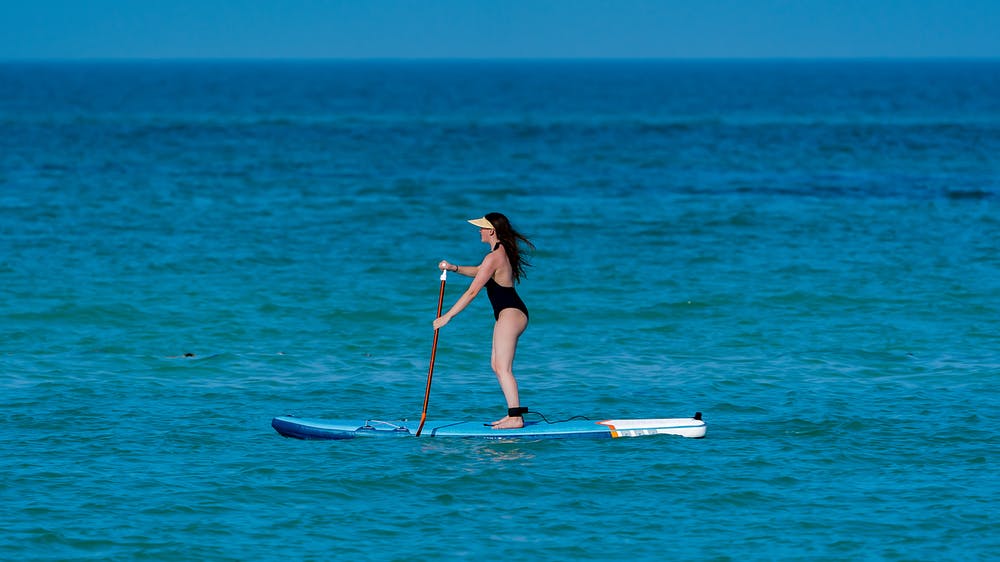There are at least 7.6 million Americans who participated in a paddling activity in 2018. The number has increased, especially with the benefits of surfing. The participants of this sport are mostly the individuals who live near a water source.
It may seem like a dangerous sport since there is an average of more than 200,000 individuals passes out by the sea after drowning annually. You should note that these water injuries make up 8% of the global mortality rate. It is crucial to get the correct information about the sport before participating in it. The article gives you insights on a stand up paddleboard when you are looking for one.
Types
The Epoxy one
The epoxy one is like a hardboard made of fiberglass. Note that it weighs less on water, making you feel flexible during the sport.
Most people use it for a long-distant adventure due to its simplified maneuvering. However, it requires immense space for storage. That’s why you must ensure that you provide proper maintenance since it is prone to scratches or dents.
You should also note that it is the most expensive of the three types.
Inflatable type
If you are a beginner, the inflatable model is the best for you. It only requires that you pump in the air before utilizing it. After the activity, you should deflate it. For this, you can store it anywhere you want, unlike the epoxy plank.
It is affordable and firm on water. You will also acquire it at an average price.
And Soft Top mode
You can identify it with a spongy, tender material at the front. It weighs more than the above two models, yet it gets recommended for kids. The board has a unique body design, such that you are guaranteed a safe fall without any injuries. It is also pet-friendly. You can also practice SUP yoga on it.
The Benefits
Preserve Balance
Expect faintness, blurred vision and confusion, if your body is not balanced. If you regularly engage in board activities, your body retains its posture. You also gain an improved balance since you will be standing on the board throughout.
It also improves your arms’ health. Expect to feel a bit weary in the first few days, though.
A Good Exercise
The stand-up paddleboard is low-impact training. You can also participate if you have any hip injury, unlike other exercises. The activity can also improve your recovery process without harming your ligaments.
Boosts Cognitive skills
Without improved cognitive skills, you cannot perform usual activities such as reading and writing. Not forgetting that if you have a high-stress level, you will decrease your productivity rate. The sea nature tranquilizes you during the activity. Expect to feel an adrenaline rush during maneuvering.In short, you are likely to forget your predicaments when engaging in the sport. It can also be a stress reliever.
Burns Calories
Opt for exercise if you want to lose weight naturally. Through cardio training, you end up burning calories in your body.
Exposure To Vitamin D
By spending at least 30 minutes surfing daily, you boost your Vitamin D intake. The mineral is vital in improving the health of your bones.
How To Use It
Ensure that you have suitable equipment such as a leash, paddle, board bag, and a Personal Flotation Device (PFD).
The leash keeps you attached to the board, hence preventing fallouts. And you will have to use the paddle to surf. Keep in mind that there are different varieties of it, with distinct features. The recommended height between the board and the paddle is six to ten inches. Use the board bag to provide maximum safety for the paddle.
With it, you can carry your apparatus conveniently. The PFD helps you stay afloat when cruising. It is recommended by the U.S Coast Guards.
Standing Up on The Board.
Identify the board type you will use for maximum productivity. Size it up per your height. Follow the steps below to stand up on the board.
- Get down on your knees first. (At this point, the equipment should be in the water so that the fin does not touch the ground)
- Start with one foot, as you keep balance. You should be at the center of it. The arms may hold on to the board with your back straightened and leaned forward.
- Slowly spring up as you try to maintain the balance. It is normal to fall, but you should try until you perfect the move.
Learn how to swim, to manage any inaccuracy. You can implement various paddling techniques to cruise. When paddling forward, strike the blade ahead of the board.
Factors To Consider When Choosing One
Price – Choose an apparatus that is easy to manage, especially if you are on a budget. Some have additional costs for maximum productivity, so weigh out your options.
Longevity – The average lifespan of these apparatus is two to three years. Quick injury may shorten their durability, so choose one that is robust enough to persevere.
Experience Level – Analyze your skillset and go for one that complements your talent. You may consult an expert that can advise you on which is the best equipment to take home.
Its Portability – Can you move across states with it? Its movability is just as vital as its performance.
Conclusion
Ensure that you get coached before paddling. You ought to inspect your board often. If you suspect that it is faulty, take it to a repair shop immediately. The storage should be clean and locked as well. Happy Surfing.












